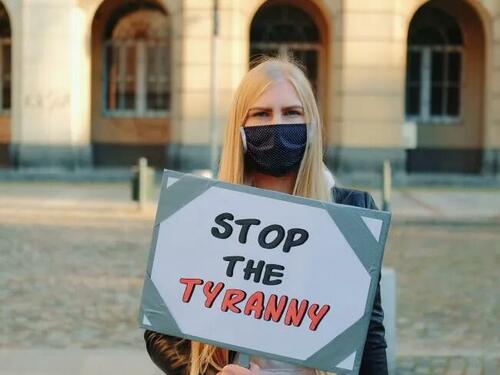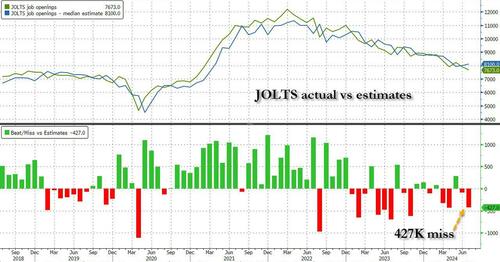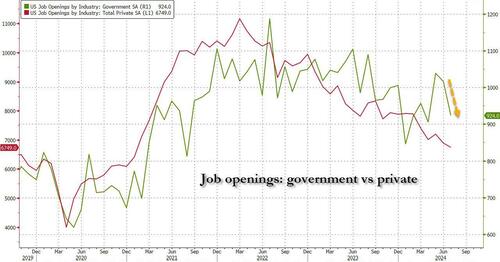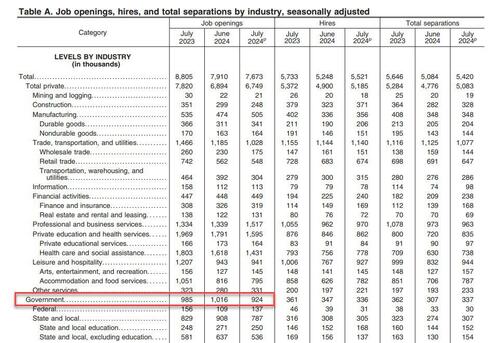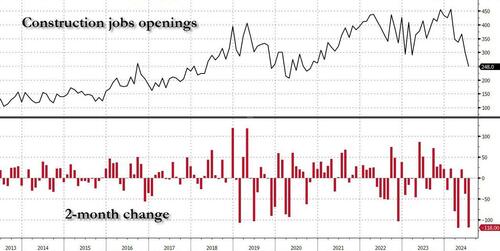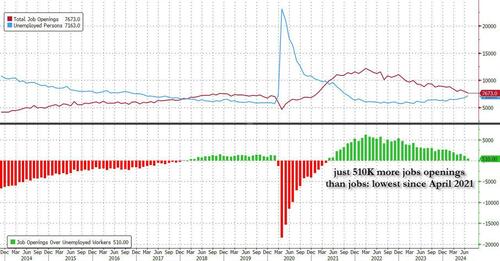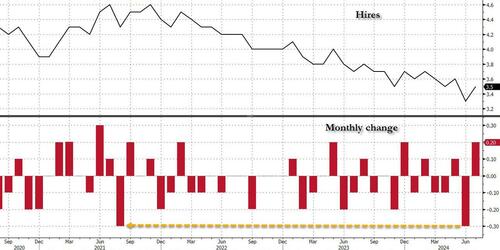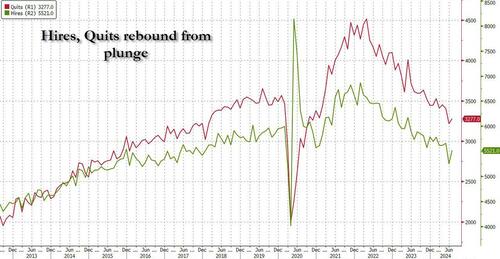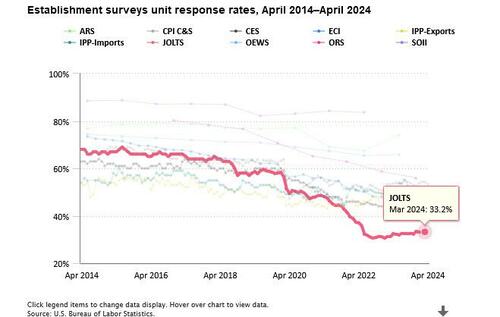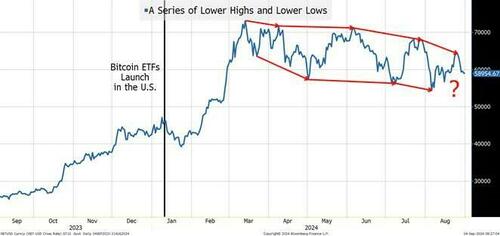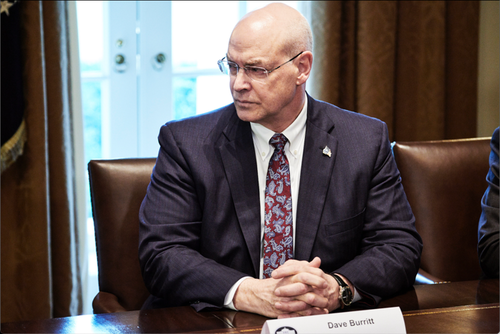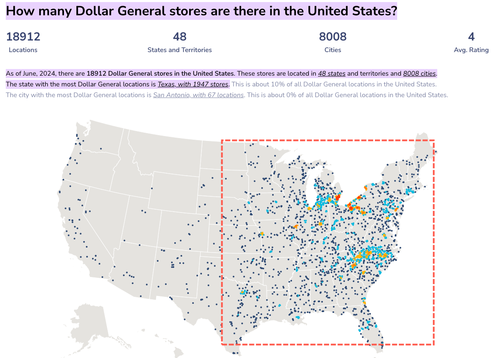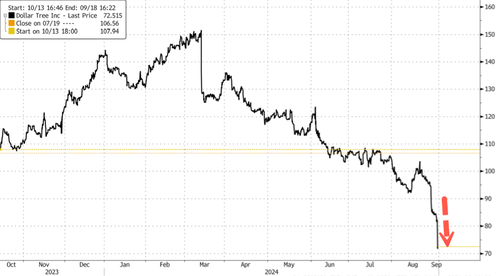Harris-Walz: The Ticket Of COVID Tyranny
Authored by J.W.Rich via The Mises Institute,
Quarantine, lockdowns, social distancing – words I’m sure everyone reading never wants to hear again. Even several years removed, the pain inflicted by Covid-19 and subsequent policy reactions is still fresh in our collective consciousness. I wouldn’t blame anyone for wanting to forget the whole thing, and you wouldn’t be the only one.
The authoritarians who violated your freedoms in the name of Covid safety would love for those years – and their mistakes – to be forgotten. As it happens, two of those authoritarians will be appearing together on ballots this November – Kamala Harris and Tim Walz.
Kamala Harris is a familiar name to many Americans. Picked out by Biden to serve as vice president on the 2020 Democrat ticket, she has served the past three-and-a-half years as Biden’s second-in-command. Depending on the outcome of the presidential elections in November, she might even be getting a promotion. But in her capacity as VP, she has overseen the Biden administration’s increasingly tyrannical edicts in the name of stopping Covid.
In 2021, the Biden administration attempted to wield OSHA against the American people by requiring that any companies with over 100 employees require weekly testing or vaccination. Not only was the legal reasoning behind this mandate spurious, the actions being mandated had, at best, questionable efficacy in combating the “Omicron” Covid strain. Thankfully, the mandate was struck down in a 6-3 decision by the Supreme Court in 2022, but neither Biden nor anyone in his administration ever rescinded their support for the measure.
Additionally, the Biden administration took steps to censor anyone skeptical of their Covid policies by putting pressure on private companies. As revealed by the “Twitter Files,” the Biden administration would request that Twitter either ban or artificially reduce the reach of certain accounts. These included high-profile individuals, such as Robert Kennedy Jr. It was only after Elon Musk purchased Twitter that such government “requests” were disclosed to the public.
Vice President Harris has done more than look on with passive approval at the Biden administration’s actions. She has been actively involved in vaccination drives, encouraging masking, and imploring Americans to social distance. At a 2021 vaccine drive in South Carolina, Harris stated:
“So, the vaccines—let me say it again—are safe. They are safe. And they are free. And they are effective. And it is that simple.”
And, on the subject of “herd immunity”:
“If you are vaccinated, you are protected. If your community is vaccinated, Covid rates in your community will go down.”
Just a few months after these remarks, the Delta variant would crash through the United States, despite millions of Americans being vaccinated. The same would happen again in 2022, when the Omicron variant caused record-high numbers of Covid infections.
Harris also supported vaccines for children aged 5-11, despite the fact that young children are among the least likely to suffer serious complications from Covid. Even the World Health Organization would later reverse their position on child vaccination because of the marginal-to-nonexistent benefits.
In contrast to Harris, Tim Walz is an unfamiliar name to many. In 2018, Walz was elected governor of Minnesota, reelected in 2022, and is currently running with Harris for vice president. During Covid, he supported the same masking, lockdown, and social distancing policies that most governors across the country did, however, Walz’s administration was willing to go farther in these measures than many other governors.
After Walz issued a stay-at-home order to prevent the spread of Covid, he also established a “Covid hotline” where people could call and report anyone who wasn’t following the governor’s edicts. This caused no small amount of controversy within the state, but when Walz was asked about removing the hotline, he said, “We’re not going to take down a phone number that people can call to keep their families safe.”
Walz was perfectly willing to enforce his lockdown orders as well. Whenever a Lakeville restaurant tried to reopen for dine-in service, state attorney general Keith Ellison sought a restraining order to keep it closed. Gloating on the situation, Ellison said. “I’m gratified the court recognizes the severity of the pandemic and the need to take urgent action to stop the spread of Covid-19.”
In June 2020, Walz issued a mask mandate, requiring anyone in an indoor space with non-family members to wear a mask. In the official announcement of this mandate, Walz said, “But as Minnesotans always do during tough times, we come together and we take care of one another. And right now there’s no better way to demonstrate our Minnesotan values than by wearing a mask.”
We now know that almost all the measures supported by Harris and Walz were ineffective at stopping Covid. Vaccines needed boosters to maintain efficacy and had mixed results against subsequent Covid strains. The cloth masks that everyone wore for years didn’t work. The infamous six-feet of social distancing was completely arbitrary. Lockdowns had only a minimal impact on a state’s Covid performance (as Tom Woods can readily tell anyone).
But, of course, no apologies have been given and no retractions issued. As with every failure of state policy, we are expected to forget and move on. As time passes, and 2020-2022 fades in our memories, people do start to forget. Looking back on the madness of those years, it’s almost difficult to believe all of this actually happened. Not only did it happen but, if given the chance, it or similar could all happen again. The Harris/Walz ticket represents a lot of things, but foremost amongst them is the tyrannical Covid regime.
Tyler Durden
Wed, 09/04/2024 – 12:50
via ZeroHedge News https://ift.tt/TVn3Nvf Tyler Durden
